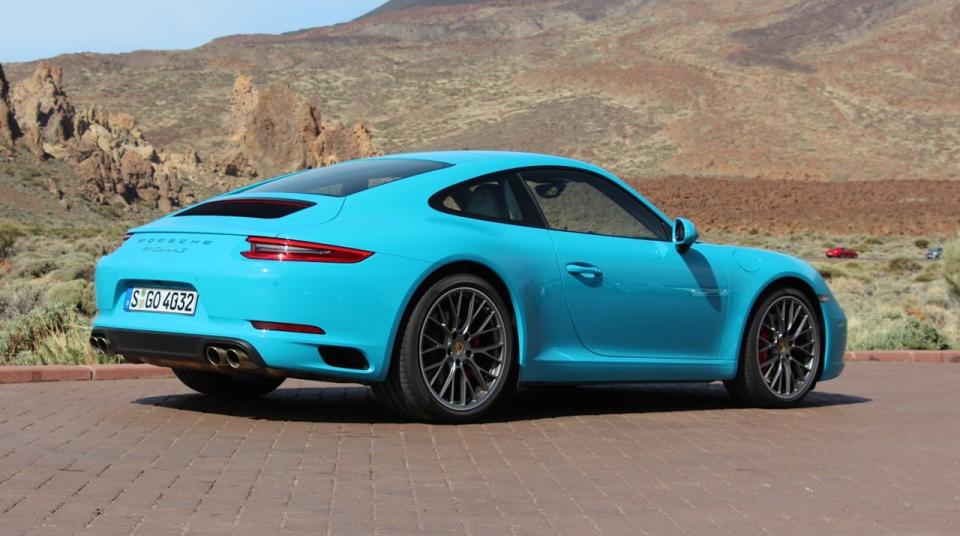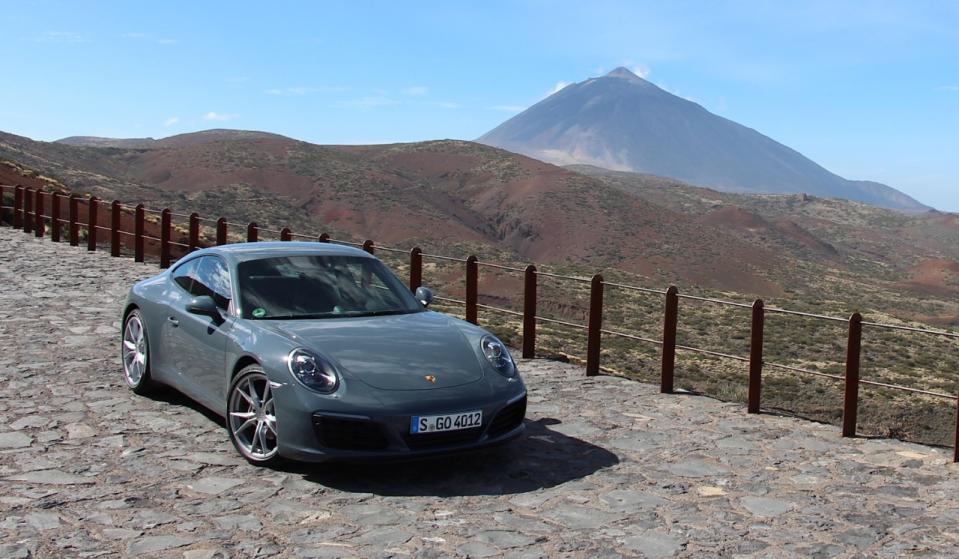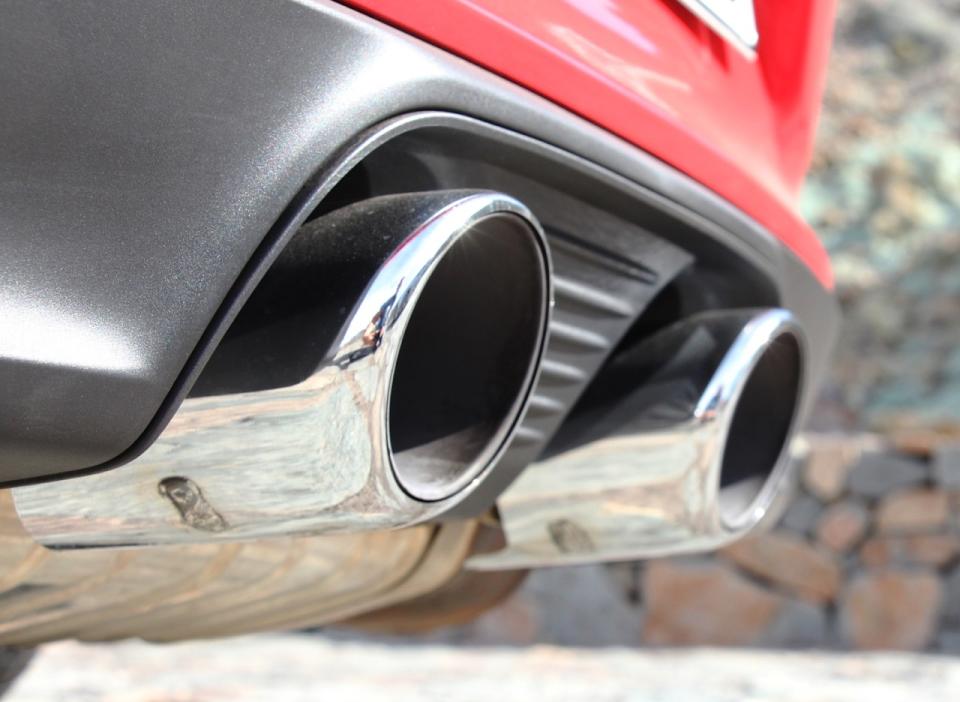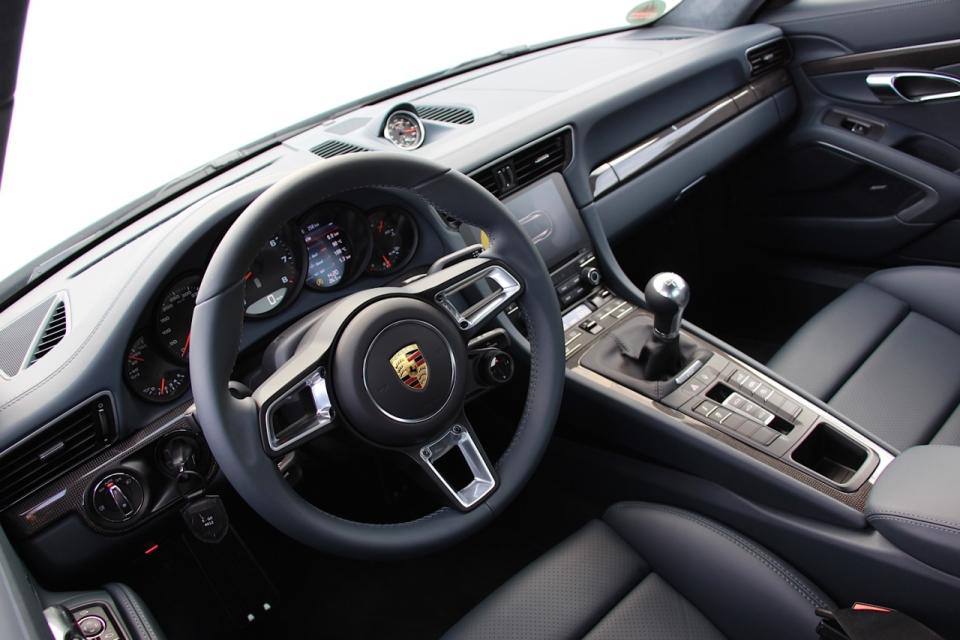2017 Porsche 911: First Drive

What is it: Iconic rear-engined sports car
Price: Starting at $90,395
Competitors: Mercedes-AMG GT, Nissan GT-R, Audi R8
Alternatives: BMW M4, Chevy Corvette Z06
Pros: Superlative handling, a new turbo engine that performs and sounds awesome.
Cons: A price tag that keeps climbing with every new generation.

Don’t let the mild exterior updates confuse you: the 2017 Porsche 911 is one of the most important updates to one of the most important cars of all time.
Technically, the 2017 model (which goes on sale in January and starts arriving next March at prices starting at $90,395) is just a mid-cycle update of the impressive 991-generation model introduced in 2012. But this time, Porsche went and meddled with perhaps the most important part of any Porsche, the engine, swapping out the beloved, naturally aspirated 3.4- and 3.8-liter horizontally opposed six-cylinders in the Carrera and Carrera S, respectively, for a shared (but uniquely tuned) 3.0-liter flat-6 with twin intercooled turbochargers. To even the most open-minded of Porschephiles, this raised some eyebrows. To many others, this was sacrilegious.

Well, put the torches out. The heart transplant was an excellent call. Not only does output rise by 20 horsepower in each model to 370 and 420, with the S getting more on account of larger turbos and different engine management, but fuel efficiency rises by some 12 percent as well. Peak torque increases to 332 lb-ft in the Carrera and 369 in the S, all of which is available from just 1700 rpm all the way through 5,000.
The big change the turbos bring affects drivability—specifically, all of that low-end torque summoned with little fuss and nary a whiff of perceptible lag. Meanwhile, horsepower builds in a steady crescendo, peaking at 6,500 rpm, thus keeping the power surge alive even after the torque plateau has been crossed, with little drop-off at the 7,500 redline. The effect? A flood of accelerative force available from a virtual standstill, which then presses you harder and harder into the seatback as revs climb—along with wider and wider grins. So yes, the new turbo mill is a revvy, engaging thing, and one’s rewards for exploring the upper reaches of its rev-osphere are as great as ever. Only now, there’s reward down low, too.

Porsche claims that the acceleration times have dropped to 4.2 seconds for the Carrera and 3.9 for the S (both with PDK), which represents the first time a non-turbo or non-GT-something 911 model has broken the four-second mark.
Even better, it sounds fantastic. In both states of tune, the Carrera’s power pulses retain their characteristic sharpness, yet the whole aural experience sounds cleaner. Roll down the windows and the high-pitched turbo swirls add something utterly and unexpectedly delightful, like bacon on your waffles. Incidentally, all of the test cars we drove had the sport exhaust. It stayed on the whole time. Drive one, and you’ll understand why.

The new engines prompted Porsche to tweak both of the car’s transmissions, blessing both with a centrifugal pendulum that reduces vibrations and an auto stop/start system that cuts off fuel during coasting, not just at a stop. For the 7-speed manual, which U.S. buyers choose at a much higher rate than the 911’s German home market, revised synchronizers and a lighter clutch make it even more joyful (and traffic-jam-friendly) than before. Hero-making rev-matching allows even novices to downshift confidently while tackling corners, and when not in full-attack mode, drivers of all skill levels can spend more time in the fuel-saving higher gears, thanks to the turbo six’s copious torque.
If the manual is heavenly, the 7-speed “PDK” dual-clutch automatic is transcendent. Left in D, the PDK is eminently responsive, never letting the engine be caught flat-footed. Yet to sharpen things up a bit on Sport Chrono-equipped models, twist the rotary dial on the 918-inspired steering wheel to “S” or better yet, “S+” for still-quicker shifts, higher shift points, and more aggressive throttle tip-in. Grab the meaty, T-shaped shifters visible through the steering wheel spokes to shift yourself, or use the console lever itself, now “properly” oriented with downshifts to the front, upshifts to the back. Want a mix of attributes? Tailor the powertrain using the Individual setting, also on the steering wheel. Another new trick: the Sport Response button in the middle of said knob pre-loads the powertrain for maximum acceleration, say, when you need to execute a terrifying pass on a mountain road. As we did. Many times.
Those same mountain roads gave us ample appreciation of the 911.2’s chassis changes, most significantly the fitment of Porsche Active Stability Management (PASM) that keeps the car level in nearly every circumstance, while dropping the ride height by 10 millimeters. This in itself makes a case for the newly optional hydraulic chin-lifter, which raises the nose 1.6 inches to clear tall driveways. The standard steering is as razor-sharp as ever, with light-to-moderate effort levels, though we couldn’t discern much more feel through the wheel than through the chassis overall. A new four-wheel steering system, optional on S, enhances stability in corners fast and slow, thereby helping the S shoot out of apexes with unflappable poise, with the ancillary benefit or chopping a foot and a half or so from the turning circle.
True to Porsche’s mantra that brakes should be stronger than the engine, the Carrera’s brakes now have larger front pads and thicker rotors, with the S’ larger rotors gaining 0.4 inches of diameter. Even after a full day of bombing up and down mountainsides of the Canary Islands, we can attest that the brakes proved eminently up to snuff, though if you spend a lot of time at the track on weekends, Porsche’s optional ceramics might be worth the upgrade.

The 991.2’s tricky design brief tasked designers with adding “precision” to the Carrera’s iconic styling—and give customers something to show off to their neighbors—without adding contrivances to the time-hewn lines that have captivated so many over the generations. Thus, the front and rear fascias and all lighting elements are all-new, rife with new LED technology. The easiest way to tell the new 911 is from the back, where the engine cover now features gleaming vertical air vanes, with side exhaust air vents for intercoolers in the lower corners. Models with the sport exhaust feature inboard mounted exhaust pipes that look as good as they sound.

Other than the aforementioned steering wheel, interior changes are minimal. The sport seats remain eminently comfortable all day long, while a new touchscreen infotainment system brings more smartphone-like logic, including Apple Carplay/Android Auto, and a screen that senses and serves up controls to an approaching hand.
Few automobiles—well, few products of any genre, really—have been stewarded so carefully over time as the Porsche 911 Carrera. And alas, the engine swap and the other design and engineering changes that mark the 2017 911 were far from easy decisions, but now that we’ve experienced how they’ve all come together to create a fresh, more modern expression of the iconic sports car, we wholeheartedly agree that they were the right ones.

 Yahoo Autos
Yahoo Autos 